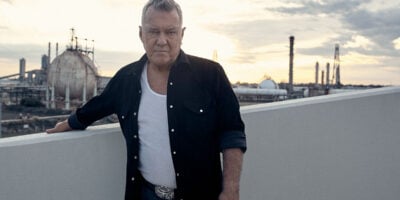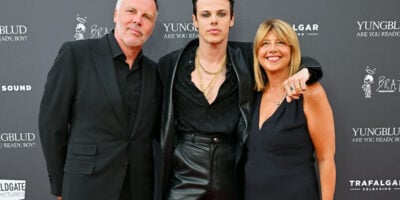Sigur Rós: A true anomaly in the world of music.
How exactly, did a small-town four piece band residing in the opposite half of the Western world grow so exponentially throughout their decade and a half long career? That they would one day co-headline national festivals, and sell out theatres worldwide?
Since their acclaimed sophomore release, 1999’s Ágætis byrjun saw them riding off the back of British greats Radiohead’s worldwide tours, it’s been a pleasant ride for a band that brought a new breed of wonderful, obscure ambience to those who had never dreamt of hearing something so stunning.
Less could be said for their supporting at. There was so much that openers Dark Horses brought, but so much was left behind. With uniqueness on their side, they played their melancholy, but stagnant style of dark rock in front of a black and white moving background, showcasing intriguing messages and icons to the crowd.
Once they departed, the lights dimmed, and frontman Jónsi – dressed in his elegant, prince-like attire – marched out, leading bassist Georg Holm, drummer Orri Páll Dýrason, along with a backing band of over ten beautifully dressed musicians.
A crowd rife with equal appreciators of the soulful music watched ever so intently, as if they couldn’t afford to miss a split second of the once-in-a-lifetime performance. Fans were immediately mesmerised by opening song “Í Gær”, falling into a trance-like state from layers upon layers of idiophones being struck melodically.
Until… Bang.
The hard-hitting drum beat echoed throughout the theatre, the startling change of intensity rousing everyone into a level of complete consciousness. Armed with his signature cello bow, Jónsi repeatedly struck the high string of his guitar as if sawing through wood to produce the precise drone paired so frequently with the sound of Sigur Rós.
The song’s power subsided, but what came next was something the gathered audience had heard before, but seemingly, never converging in the right light: Jónsi’s falsetto.
Expressed in such a way that the movement of the Icelandic language proved effective in conveying a message, or an alternative source of communication, as much as understanding what is being said.
The vocals were powerful, but passively so, as if there was a sense of urgency in his voice that was possessed by contemplation.
There was little décor, but what was there was implemented effectively. Pulses of echoed sampling in “Svefn-G-Englar” paired with illumination of scattered light bulbs as well as being used in static lighting in “Hoppípolla” and “Olsen Olsen”.
The visual background took the already magnificent ambience to pure beauty. Such a range of wonderful displays was perfectly matched up with soundscapes. Valtari’s “Ekki Múkk” to a motionless backing of the album artwork, with only the ship moving between edges of the screen, as well as a humble landscape of several silhouettes standing upon a cliff-top, with globes of light radiating from their bodies and slowly rising to the sound of “Varúð”.
There will never be a series of words that will string together to exactly describe the feelings that are evoked while being part of a Sigur Rós performance.
The faultless instrumentation, the overwhelming stage presence, the awe-inspiring ability to envelope the crowd into a sense of dream – every single aspect contributed to the remarkable performance.

































